
(a)
Interpretation:
The mechanism and major organic product(s) of the given reaction are to be drawn.
Concept introduction:
In the hydroboration reaction of an alkene, a molecule of water adds to the carbon-carbon double bond of the alkene in an anti-Markovnikov manner. The boron atom in borane is less electronegative than hydrogen and acts as the electron-poor atom. Therefore, the
Answer to Problem 12.52P
The mechanism for the given reaction is
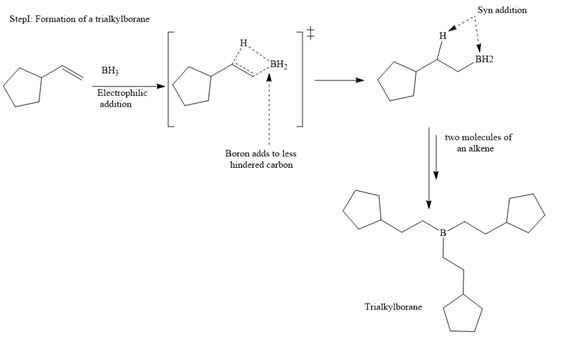
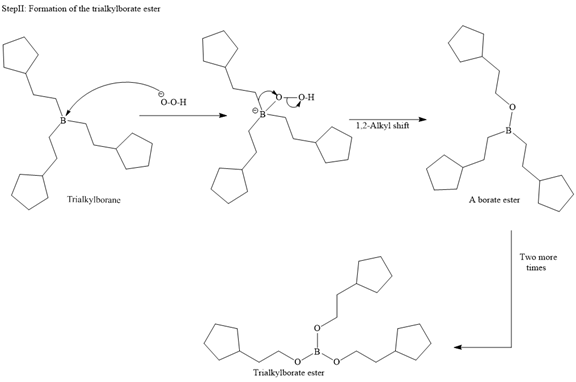
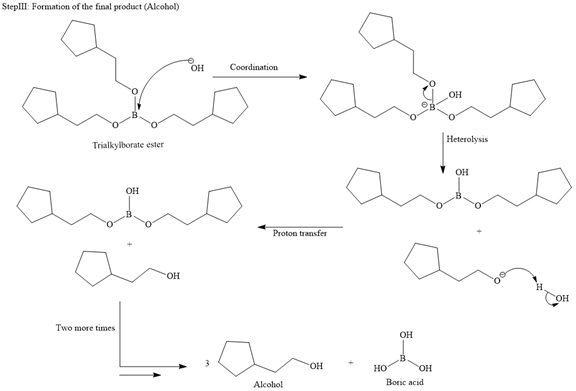
The major product for the given reaction is
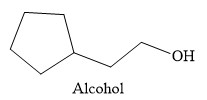
Explanation of Solution
The given reaction is

The structure of cyclopentylethene is

In the first step, borane adds across the carbon-carbon double bond of the alkene via a four-membered cyclic transition state. The addition is anti-Markovnikov as the boron atom adds to the fewer substituted (fewer sterically hindered) carbon, and the hydrogen adds to the most substituted carbon. The remaining two hydrogen atoms from borane are replaced in a similar way by two more alkene molecules to form a trialkylborane.
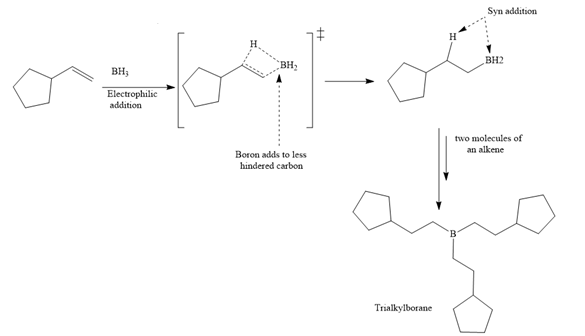
A trialkylborane is then oxidized by the hydroperoxide anion (

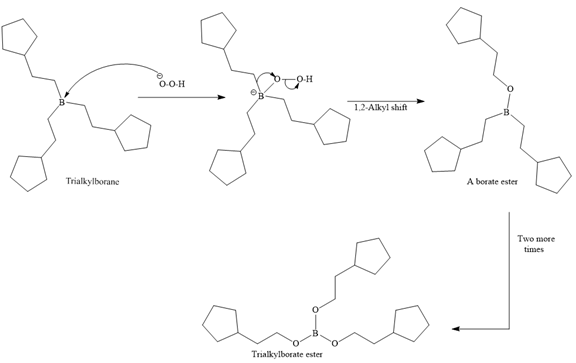
Then the trialkylborate ester undergoes base hydrolysis to three molecules of the alcohol product and boric acid.
The
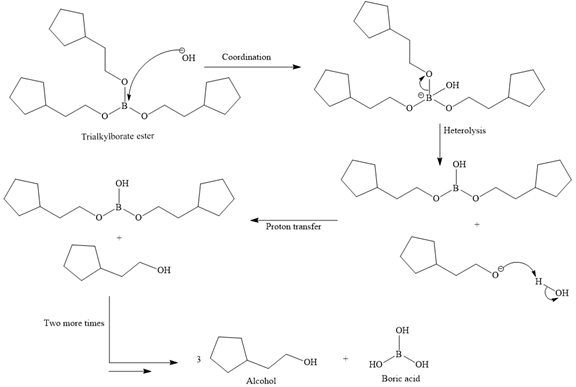
Thus, the major product of the given reaction is

The mechanism and the major organic product(s) for the given reaction are drawn on the basis of an anti-Markovnikov syn addition of borane across the double bond.
(b)
Interpretation:
The mechanism and the major organic product(s) of the given reaction are to be drawn.
Concept introduction:
In the hydroboration reaction of an alkene, a molecule of water adds to the carbon-carbon double bond of the alkene in an anti-Markovnikov manner. The boron atom in borane is less electronegative than hydrogen and acts as the electron-poor atom. Therefore, the
Answer to Problem 12.52P
The mechanism for the given reaction is
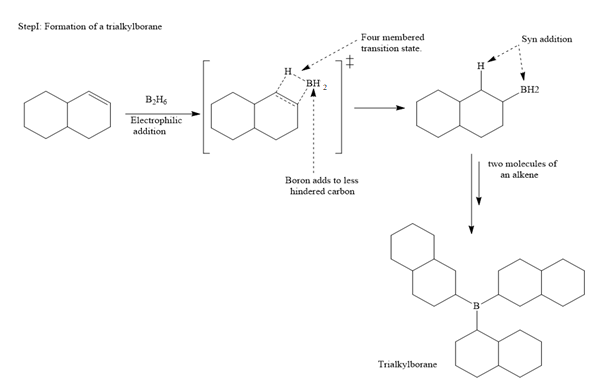
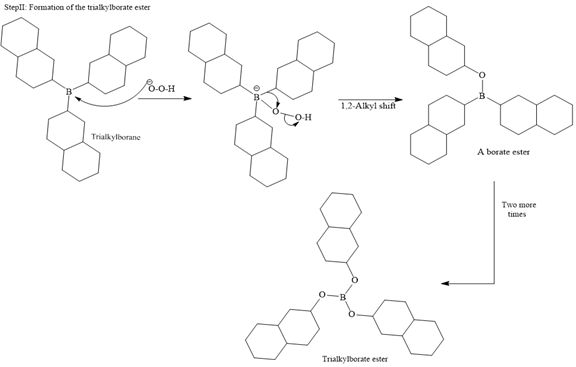
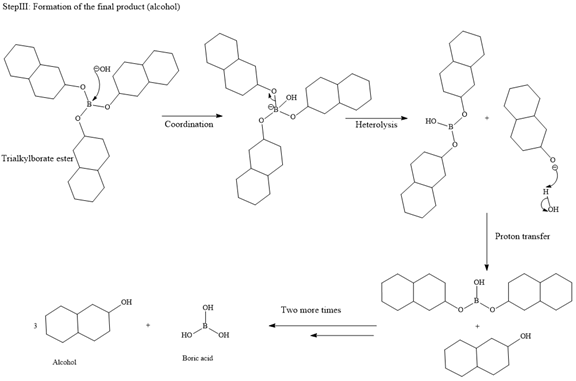
The major product of the given reaction is

Explanation of Solution
The given reaction is

In the first step, borane adds across the carbon-carbon double bond of the alkene via a four-membered cyclic transition state. The addition is anti-Markovnikov as the boron atom adds to the fewer substituted (fewer sterically hindered) carbon, and the hydrogen adds to the most substituted carbon. The remaining two hydrogen atoms from borane are replaced in a similar way by two more alkene molecules to form a trialkylborane.
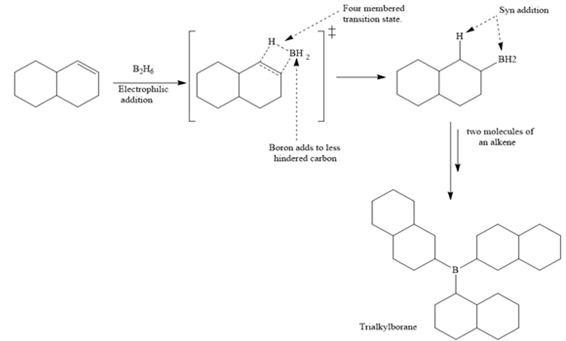
The trialkylborane is then oxidized by the hydroperoxide anion (
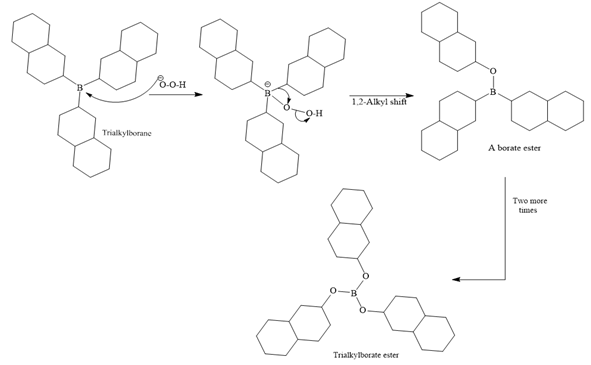
Then the trialkylborate ester undergoes base hydrolysis to three molecules of the alcohol product and boric acid.
The
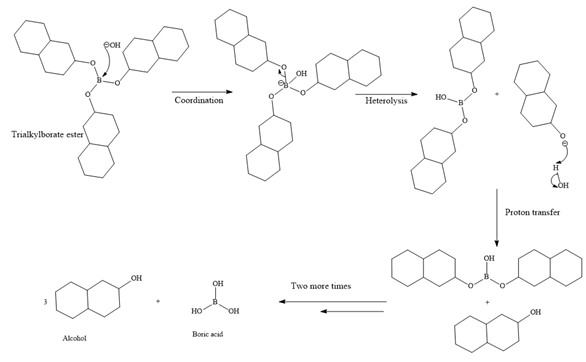
Borane can add across the double bond from either above the plane of the ring or from below the plane of the ring. This will lead to the formation of a racemic mixture as the carbon bonded to the OH group is chiral.
Thus, the major product for the given reaction is
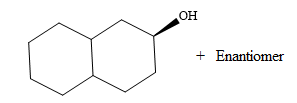
The mechanism and the major organic product(s) for the given reaction are drawn on the basis of an anti-Markovnikov syn addition of borane across the double bond.
(c)
Interpretation:
The mechanism and the major organic product(s) of the given reaction are to be drawn.
Concept introduction:
Like alkenes,
The addition of one molecule of borane produces an alkene, and if it is a terminal alkene, another molecule of borane can add to it. This leads to a mixture of products.
This problem can be avoided by the use of a bulky dialkylborane like disiamylborane,
Answer to Problem 12.52P
The mechanism for the given reaction is
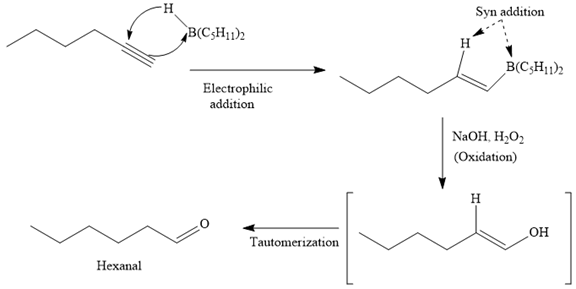
The major product for the given reaction is

Explanation of Solution
The given reaction is

The structure of disiamylborane is
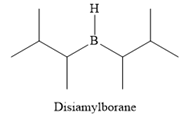
It is a sterically hindered alkyl borane, having only one
So the first step of the above reaction is a syn anti-Markovnikov electrophilic addition of boron and hydrogen to the carbon-carbon triple bond of the substrate.
Oxidation of this adduct by basic

Thus, the major product of the given reaction is

The mechanism and the major organic product(s) of the given reaction are drawn on the basis of the reaction conditions.
(d)
Interpretation:
The mechanism and the major organic product(s) of the given reaction are to be drawn.
Concept introduction:
Like alkenes, alkynes also undergo hydroboration reaction, but the product is different than alcohol. The oxidation of alkynes is carried out by using bulky dialkylborane like disiamylborane
Answer to Problem 12.52P
The mechanism for the given reaction is
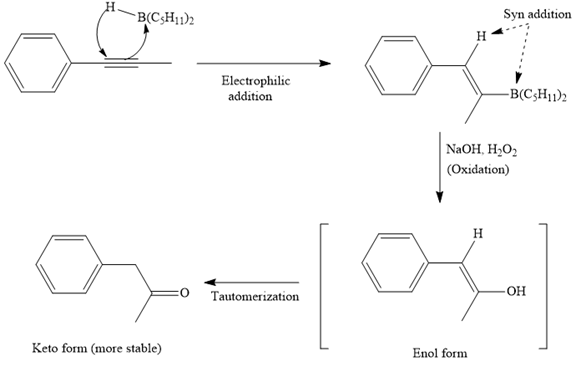
The major product for the given reaction is
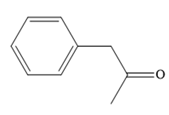
Explanation of Solution
The given reaction is

The structure of disiamylborane is
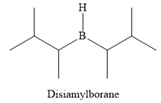
It is a sterically hindered alkyl borane having only one
The first step of the reaction is a syn anti-Markovnikov electrophilic addition of

Thus, the major product for the given reaction is
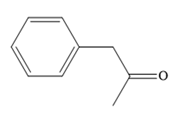
The mechanism and major organic product(s) for the given reaction are drawn on the basis of the reaction conditions.
Want to see more full solutions like this?
Chapter 12 Solutions
Organic Chemistry: Principles and Mechanisms (Second Edition)
- CH, CH CH₂ CH₂ Phytyl side chain 5. What is the expected order of elution of compounds A-D below from a chromatography column packed with silica gel, eluting with hexane/ethyl acetate? C D OHarrow_forwardPlease analze my gel electrophoresis column of the VRK1 kinase (MW: 39.71 kDa). Attached is the following image for the order of column wells and my gel.arrow_forward2.0arrow_forward
- Write the electron configuration of an atom of the element highlighted in this outline of the Periodic Table: 1 23 4 5 6 7 He Ne Ar Kr Xe Rn Hint: you do not need to know the name or symbol of the highlighted element! ☐arrow_forwardCompare these chromatograms of three anti-psychotic drugs done by HPLC and SFC. Why is there the difference in separation time for SFC versus HPLC? Hint, use the Van Deemter plot as a guide in answering this question. Why, fundamentally, would you expect a faster separation for SFC than HPLC, in general?arrow_forwardA certain inorganic cation has an electrophoretic mobility of 5.27 x 10-4 cm2s-1V-1. The same ion has a diffusion coefficient of 9.5 x 10-6cm2s-1. If this ion is separated from cations by CZE with a 75cm capillary, what is the expected plate count, N, at an applied voltage of 15.0kV? Under these separation conditions, the electroosmotic flow rate was 0.85mm s-1 toward the cathode. If the detector was 50.0cm from the injection end of the capillary, how long would it take in minutes for the analyte cation to reach the detector after the field was applied?arrow_forward
- 2.arrow_forwardPlease solve for the following Electrochemistry that occursarrow_forwardCommercial bleach contains either chlorine or oxygen as an active ingredient. A commercial oxygenated bleach is much safer to handle and less likely to ruin your clothes. It is possible to determine the amount of active ingredient in an oxygenated bleach product by performing a redox titration. The balance reaction for such a titration is: 6H+ +5H2O2 +2MnO4- à 5O2 + 2Mn2+ + 8H2O If you performed the following procedure: “First, dilute the Seventh Generation Non-Chlorine Bleach by pipetting 10 mL of bleach in a 100 mL volumetric flask and filling the flask to the mark with distilled water. Next, pipet 10 mL of the diluted bleach solution into a 250 mL Erlenmeyer flask and add 20 mL of 1.0 M H2SO4 to the flask. This solution should be titrated with 0.0100 M KMnO4 solution.” It took 18.47mL of the KMnO4 to reach the endpoint on average. What was the concentration of H2O2 in the original bleach solution in weight % assuming the density of bleach is 1g/mL?arrow_forward
- 10.arrow_forwardProper care of pH electrodes: Why can you not store a pH electrode in distilled water? What must you instead store it in? Why?arrow_forwardWrite the electron configuration of an atom of the element highlighted in this outline of the Periodic Table: 1 23 4 569 7 He Ne Ar Kr Xe Rn Hint: you do not need to know the name or symbol of the highlighted element! §arrow_forward
 Organic Chemistry: A Guided InquiryChemistryISBN:9780618974122Author:Andrei StraumanisPublisher:Cengage Learning
Organic Chemistry: A Guided InquiryChemistryISBN:9780618974122Author:Andrei StraumanisPublisher:Cengage Learning
